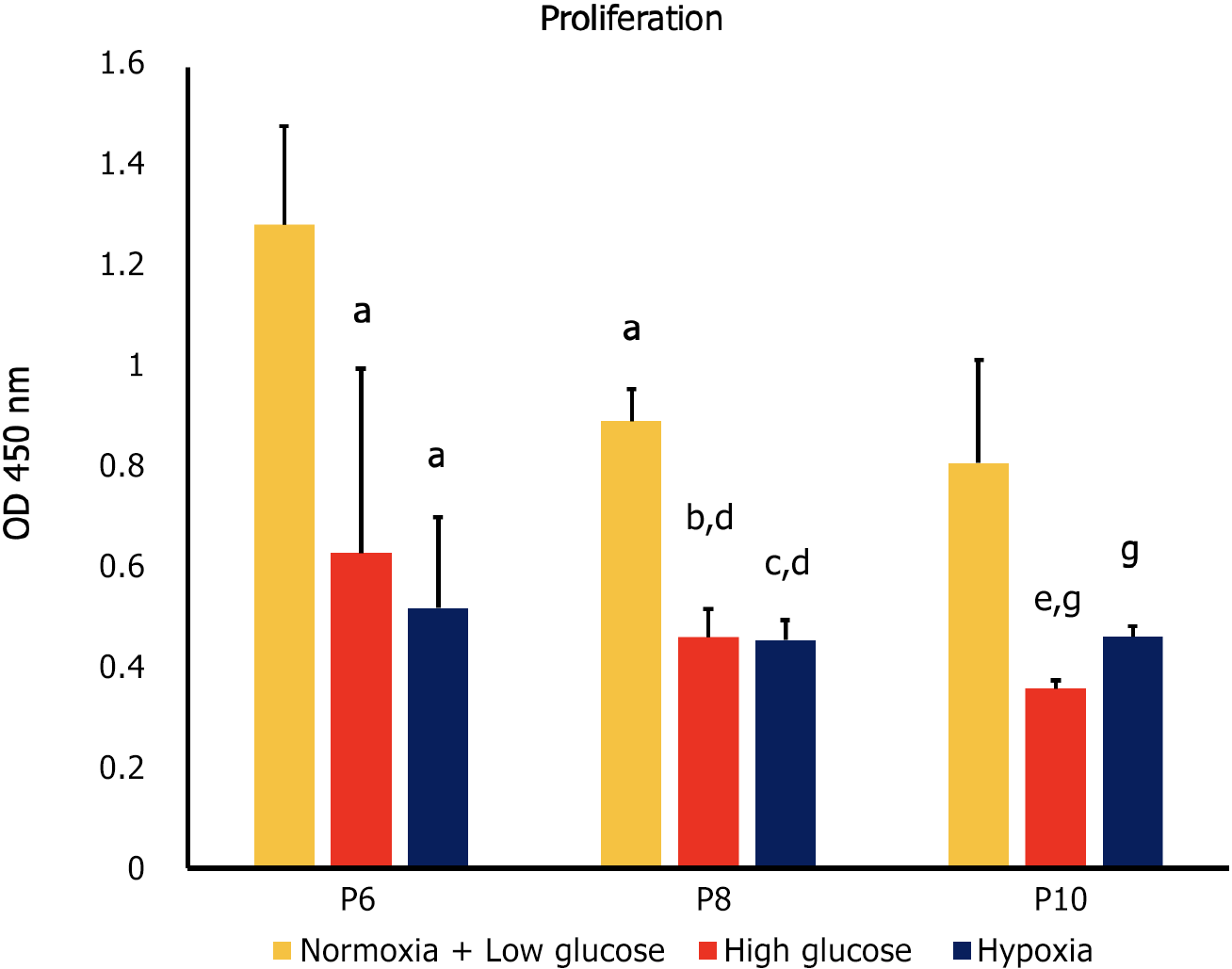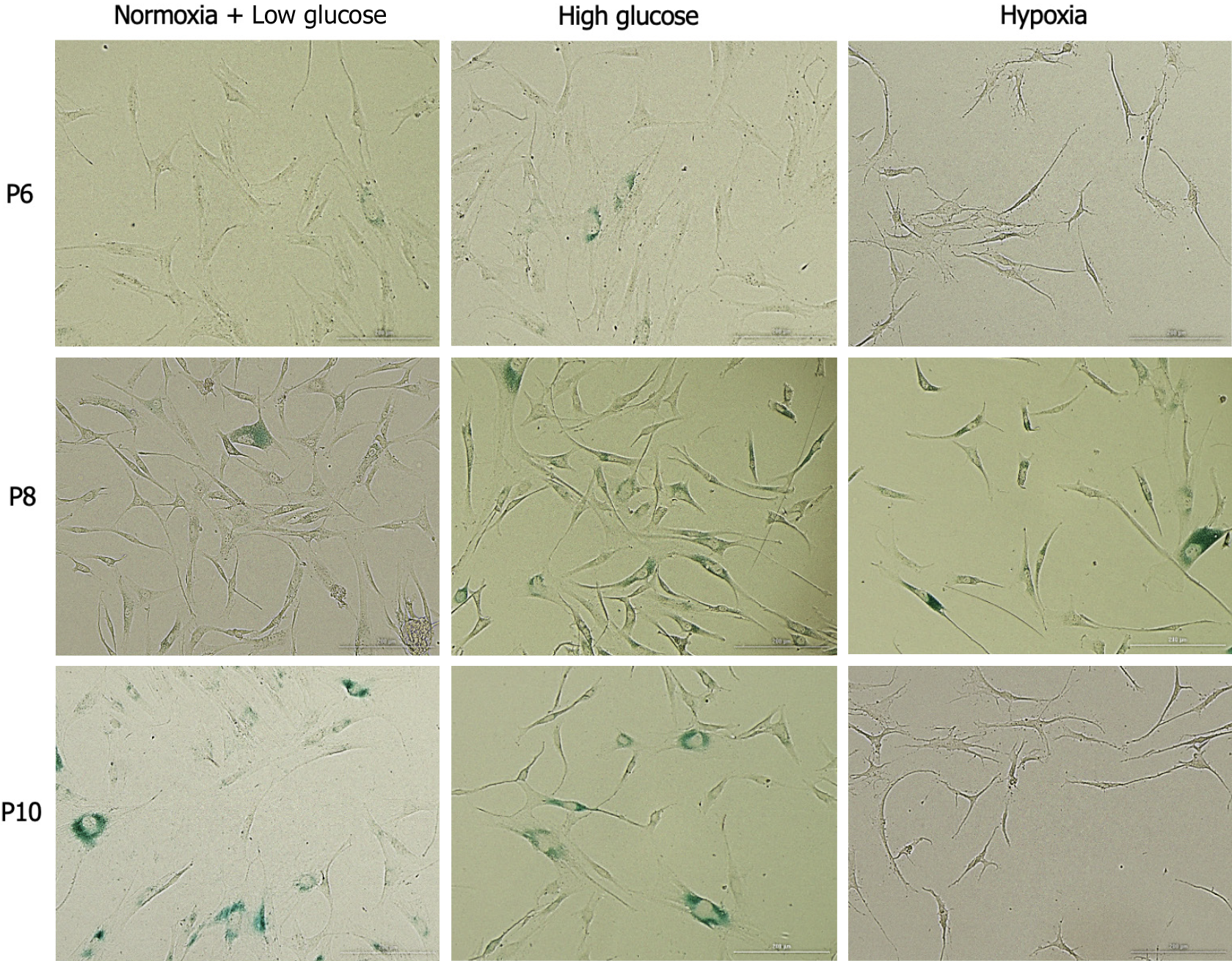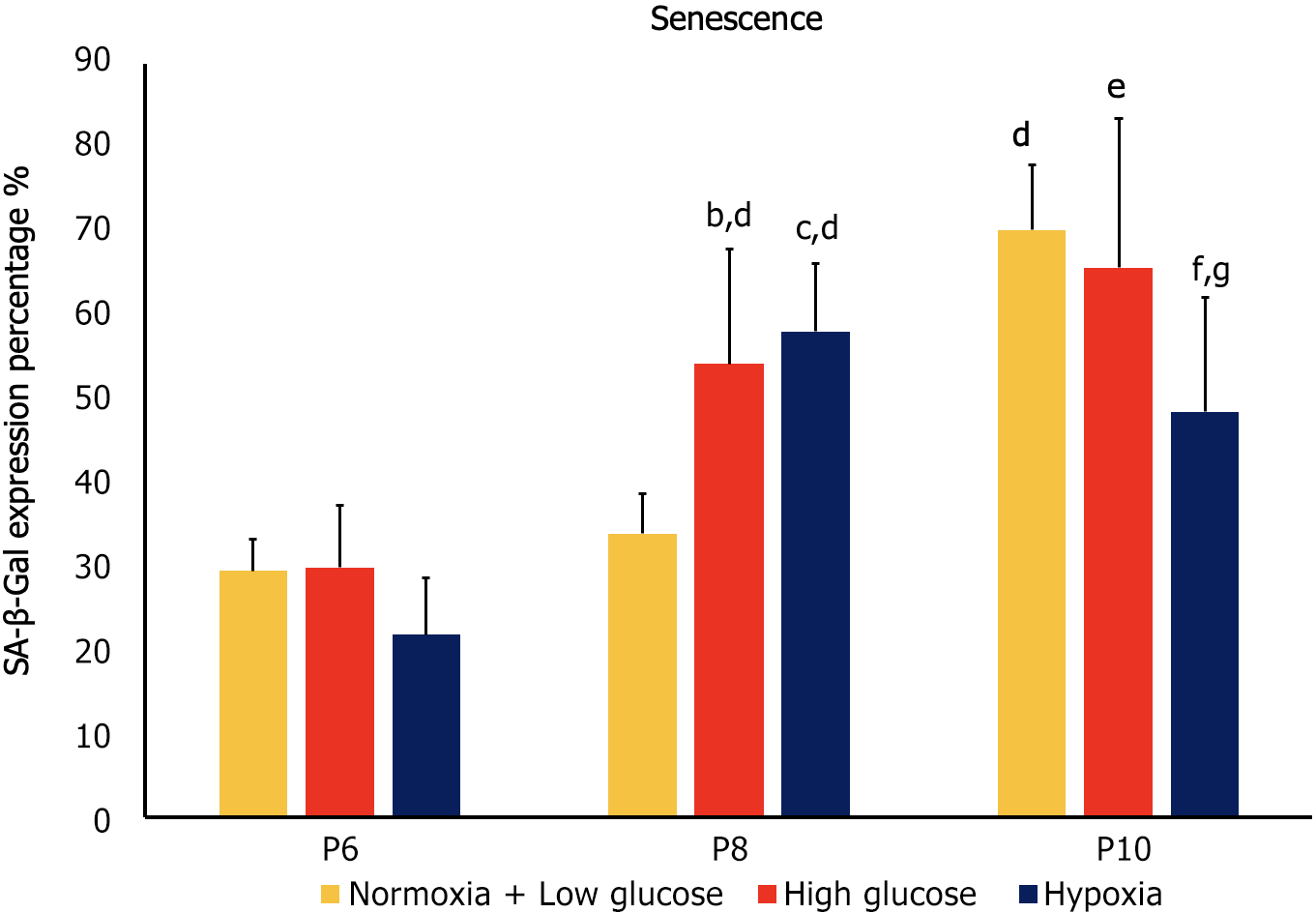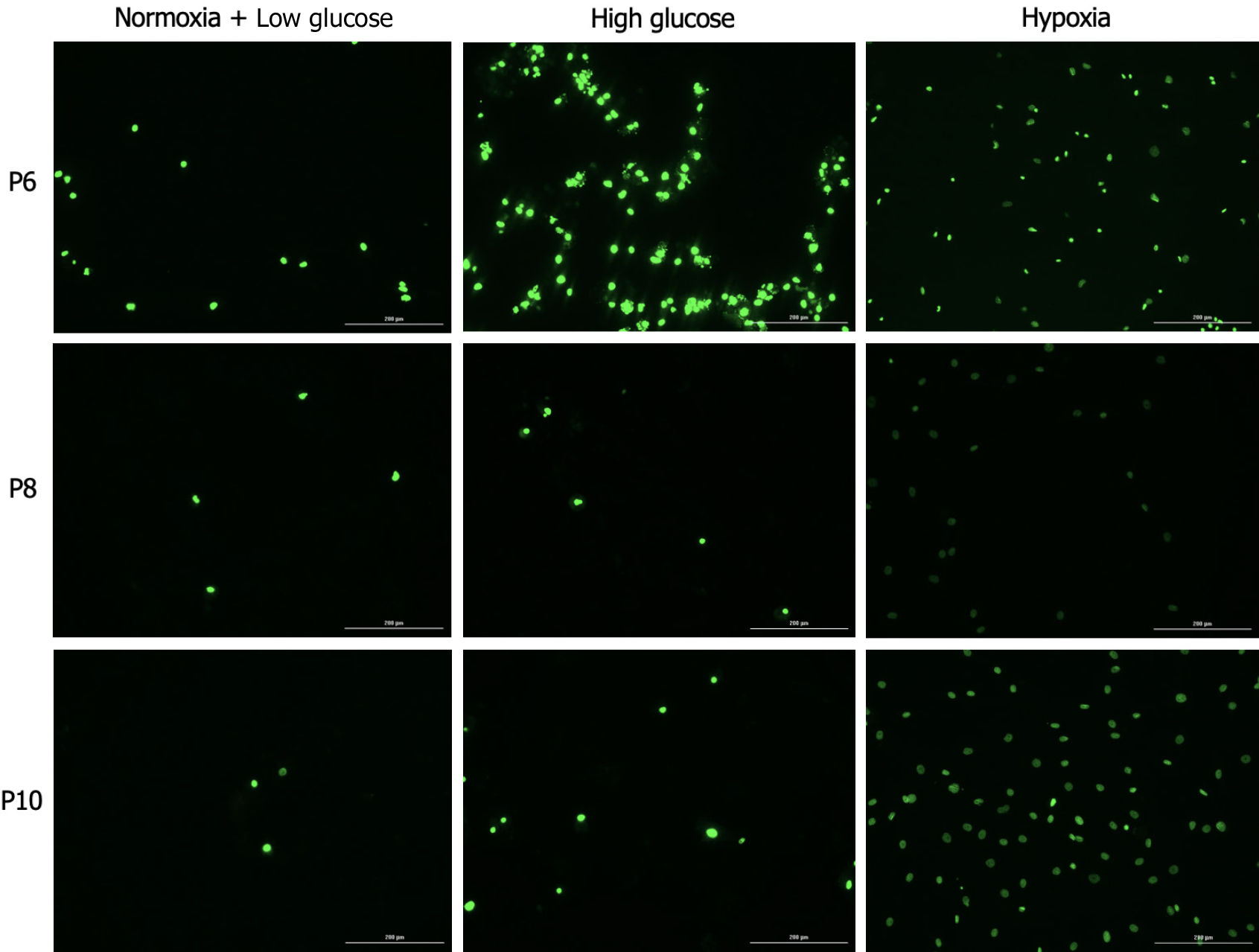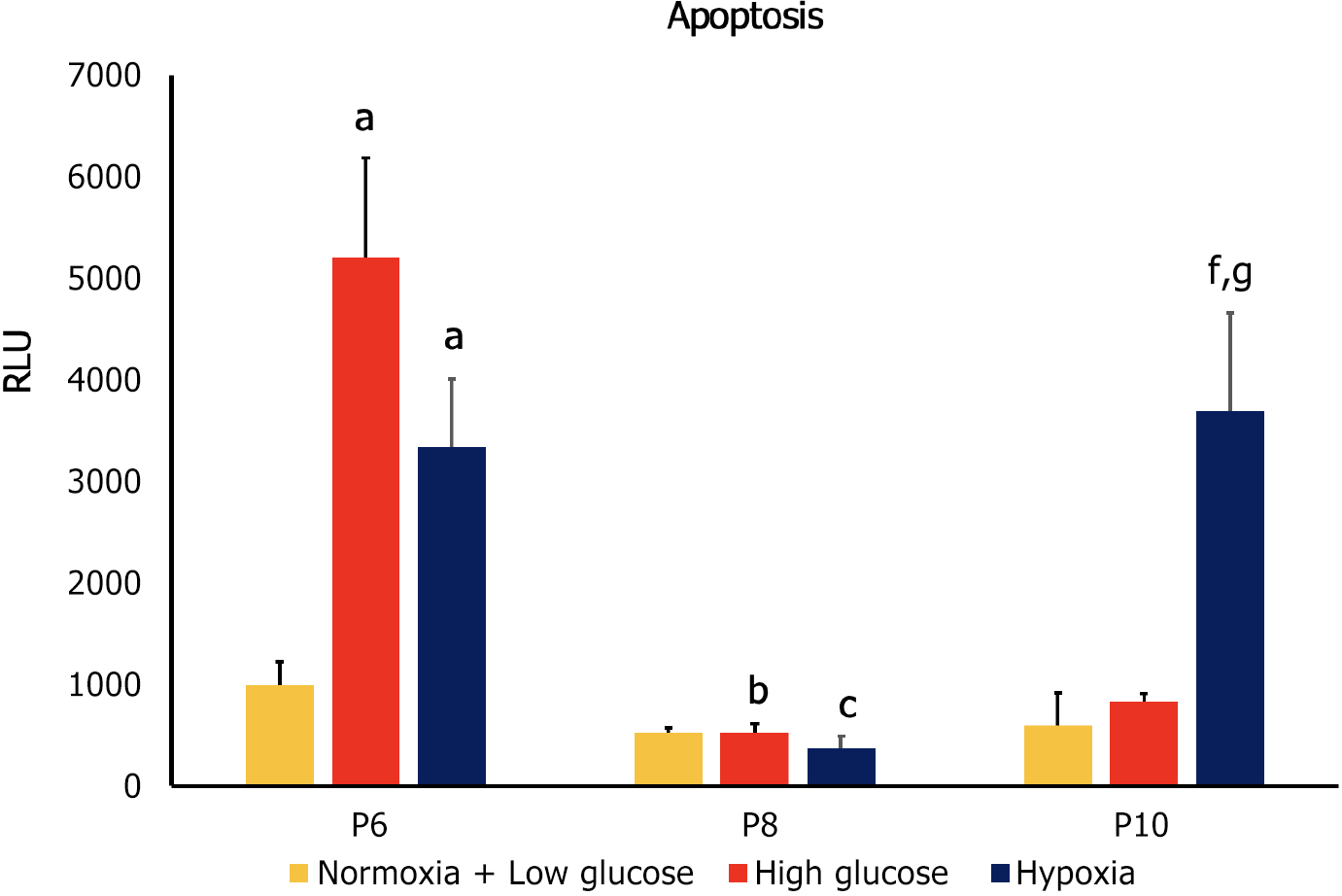Copyright
©The Author(s) 2024.
World J Stem Cells. Apr 26, 2024; 16(4): 434-443
Published online Apr 26, 2024. doi: 10.4252/wjsc.v16.i4.434
Published online Apr 26, 2024. doi: 10.4252/wjsc.v16.i4.434
Figure 1 Proliferation of human adipose-tissue derived mesenchymal stem cells at passages 6, 8 and 10 under conditions of normoxia + low glucose (control), high glucose and hypoxia, as measured by WST-1.
High glucose and hypoxia were associated with a significant decrease in proliferation of human adipose-tissue derived mesenchymal stem cells (MSCs) compared to control cells at each of the studied passages (P6, P8, and P10). At P8, proliferation was significantly decreased in all MSC groups compared to their counterparts at P6. At P10 only MSCs cultured in high glucose exhibited a significant decrease in proliferation compared to the same condition at P8. aP < 0.05 vs passages 6 (P6) normoxia + low glucose; bP < 0.05 vs P6 high glucose; cP < 0.05 vs P6 hypoxia; dP < 0.05 vs P8 normoxia + low glucose; eP < 0.05 compared to P8 high glucose; gP < 0.05 compared to P10 normoxia + low glucose. P6: Passage 6; P8: Passage 8; P10: Passage 10.
Figure 2 Images of senescence associated β-galactosidase staining in human adipose-tissue derived mesenchymal stem cells at passages 6, 8 and 10 under conditions of normoxia + low glucose, high glucose and hypoxia.
P6: Passage 6; P8: Passage 8; P10: Passage 10.
Figure 3 Senescence of human adipose-tissue derived mesenchymal stem cells at passages 6, 8 and 10 under conditions of normoxia + low glucose (control), high glucose and hypoxia, as indicated by X-gal expression percentage.
At passages 6 (P6), no significant differences in senescence were detected between the cells cultured in stress conditions and control cells. At P8, mesenchymal stem cells (MSCs) exposed to both hypoxia and high glucose exhibited significantly higher senescence compared to control at the same passage, as well as to their counterparts at P6. At P10 control MSCs and MSCs cultured in high glucose showed significantly higher senescence compared to their counterparts at the previous passage, while MSCs cultured under hypoxia had significantly less senescence than control MSCs at P10 and compared to the cells cultured at the same condition at P8. bP < 0.05 vs passages 6 (P6) high glucose; cP < 0.05 vs P6 hypoxia; dP < 0.05 vs P8 normoxia + low glucose; eP < 0.05 compared to P8 high glucose; fP < 0.05 compared to P8 hypoxia; gP < 0.05 compared to P10 normoxia + low glucose. P6: Passage 6; P8: Passage 8; P10: Passage 10; SA-β-gal: Senescence-associated beta-galactosidase.
Figure 4 Images of Annexin V staining, used as a marker of apoptosis in human adipose-tissue derived mesenchymal stem cells at passages 6, 8 and 10 under conditions of normoxia + low glucose, high glucose and hypoxia.
P6: Passage 6; P8: Passage 8; P10: Passage 10.
Figure 5 Apoptosis of human adipose-tissue derived mesenchymal stem cells at passages 6, 8 and 10 under conditions of normoxia + low glucose (control), high glucose and hypoxia, as indicated by Annexin V.
Mesenchymal stem cells (MSCs) at passages 6 (P6) showed increased apoptosis under conditions of high glucose and hypoxia compared to control cells. At P8 apoptosis significantly decreased in both stress conditions compared to their counterparts at P6, while no significant difference was detected compared to the control group at the same passage. At P10 only cells cultured in hypoxia had a significantly higher apoptosis compared to control group at P10 and to counterpart cells at both P6 and P8. aP < 0.05 vs passages 6 (P6) normoxia + low glucose; bP < 0.05 vs P6 high glucose; cp < 0.05 vs P6 hypoxia; fP < 0.05 compared to P8 hypoxia; gP < 0.05 compared to P10 normoxia + low glucose. P6: Passage 6; P8: Passage 8; P10: Passage 10; RLU: Relative luminescence intensity.
- Citation: Almahasneh F, Abu-El-Rub E, Khasawneh RR, Almazari R. Effects of high glucose and severe hypoxia on the biological behavior of mesenchymal stem cells at various passages. World J Stem Cells 2024; 16(4): 434-443
- URL: https://www.wjgnet.com/1948-0210/full/v16/i4/434.htm
- DOI: https://dx.doi.org/10.4252/wjsc.v16.i4.434









